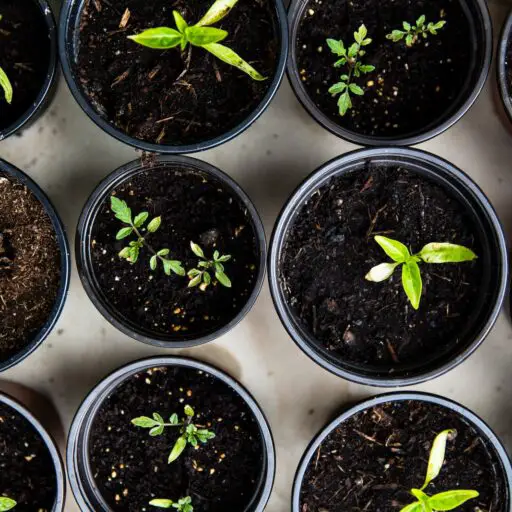Support our educational content for free when you purchase through links on our site. Learn more
Quick Answer: Community gardens help the environment by promoting sustainable practices, improving air and soil quality, conserving water, supporting biodiversity, and reducing food waste. They also create green spaces, reduce urban heat island effect, and mitigate climate change. Additionally, community gardens foster a sense of community and provide educational opportunities.
Are you curious about how community gardens positively impact the environment? Look no further! Our team of expert gardeners at Community Gardening™ has compiled a comprehensive guide to help you understand the benefits, tips, and facts about how community gardens help the environment. So grab your gardening gloves and let’s dig in!
Table of Contents
- Quick Tips and Facts
- What Is a Community Garden?
- Why Establish a Community Garden?
- How Do Community Gardens Help the Environment?
- Conserving Water in Community Gardens
- Supporting Biodiversity in Community Gardens
- Reducing Food Waste in Community Gardens
- Creating Green Spaces and Reducing Urban Heat Island Effect
- Mitigating Climate Change through Community Gardens
- Frequently Asked Questions
- Conclusion
- Recommended Links
- Reference Links
Quick Tips and Facts
- Community gardens promote sustainable practices and environmental stewardship.
- They improve air and soil quality, conserve water, and support biodiversity.
- Community gardens reduce food waste and create green spaces.
- They help mitigate climate change and reduce the urban heat island effect.
- Participating in community gardens fosters a sense of community and provides educational opportunities.
Now, let’s dive deeper into the world of community gardens and explore their environmental benefits.
What Is a Community Garden?
A community garden is a shared space where individuals, families, or groups come together to cultivate plants, such as flowers, fruits, vegetables, and herbs. These gardens are typically located in urban areas where access to fresh produce and opportunities to connect with nature are limited. Community gardens can be established by various organizations, including churches, non-profit organizations, neighborhood associations, clubs, municipalities, and community agencies.
Why Establish a Community Garden?
Establishing a community garden offers numerous benefits to individuals, the community, and the environment. Let’s take a closer look at some of these benefits:
-
Beautifying the Landscape: Community gardens enhance the visual appeal of neighborhoods, transforming vacant lots or underutilized spaces into vibrant green areas. These gardens contribute to the overall aesthetics of the community, making it more inviting and attractive.
-
Increasing Access to Fresh Produce: Community gardens provide a source of fresh, locally grown produce, which is especially important in areas known as “food deserts” where access to affordable, nutritious food is limited. By growing their own fruits and vegetables, community gardeners can enjoy a diverse range of fresh produce.
-
Promoting Healthier Lifestyles: Engaging in gardening activities promotes physical activity and encourages healthier lifestyles. Community gardeners have the opportunity to engage in regular exercise, which can help combat obesity and improve overall well-being.
-
Cleaning up the Environment: Community gardens play a vital role in cleaning up the environment by improving air and soil quality. Plants in community gardens absorb carbon dioxide and release oxygen, contributing to cleaner air. Additionally, the cultivation of plants helps to prevent soil erosion and promotes soil health.
-
Building Stronger Communities: Community gardens foster a sense of community and connection among participants. By working together towards a common goal, community gardeners build relationships, share knowledge, and support one another. This sense of community can lead to increased social cohesion and potentially reduce crime rates.
-
Providing Educational Opportunities: Community gardens serve as outdoor classrooms, providing educational opportunities for people of all ages. They offer a hands-on learning experience where individuals can learn about plant biology, sustainable gardening practices, and the importance of environmental stewardship.
-
Relieving Stress and Increasing Wellness: Gardening has been shown to have therapeutic benefits, reducing stress and promoting mental well-being. Community gardeners have the opportunity to slow down, connect with nature, and prioritize meaningful activities, which can have a positive impact on their overall wellness.
How Do Community Gardens Help the Environment?
Community gardens have a significant positive impact on the environment. Let’s explore some of the ways in which community gardens help create a greener and more sustainable world:
Conserving Water in Community Gardens
Community gardens can play a crucial role in water conservation. By implementing water-efficient practices, such as mulching, drip irrigation, and rainwater harvesting, community gardeners can reduce water usage and minimize water waste. Conserving water not only helps to protect this precious resource but also reduces the strain on local water supplies.
Supporting Biodiversity in Community Gardens
Community gardens provide habitats for a wide range of plant and animal species, supporting biodiversity in urban areas. By cultivating a diverse range of plants, community gardeners attract beneficial insects, birds, and pollinators, such as bees and butterflies. These pollinators play a vital role in the reproduction of plants and contribute to the overall health of ecosystems.
Reducing Food Waste in Community Gardens
Community gardens help reduce food waste by promoting sustainable food production practices. By growing their own food, community gardeners have better control over the quantity and quality of the produce they harvest. This reduces the reliance on commercially grown food that often goes to waste due to spoilage or transportation issues.
Creating Green Spaces and Reducing Urban Heat Island Effect
Community gardens create green spaces in urban areas, providing a respite from concrete and asphalt. These green spaces help to reduce the urban heat island effect, where cities experience higher temperatures due to the absorption and retention of heat by buildings and pavement. The shade provided by trees and plants in community gardens helps to cool the surrounding area and improve the overall microclimate.
Mitigating Climate Change through Community Gardens
Community gardens contribute to mitigating climate change by sequestering carbon dioxide and reducing greenhouse gas emissions. Plants in community gardens absorb carbon dioxide during photosynthesis, helping to offset the carbon emissions produced by human activities. Additionally, community gardens promote sustainable gardening practices, such as composting and organic gardening, which reduce the use of synthetic fertilizers and pesticides that contribute to greenhouse gas emissions.
Frequently Asked Questions
What are 3 benefits of a community garden?
Community gardens offer a multitude of benefits, but here are three key advantages:
-
Access to Fresh Produce: Community gardens provide individuals with access to fresh, locally grown produce, promoting healthier eating habits and reducing reliance on commercially grown food.
-
Environmental Stewardship: Community gardens promote sustainable gardening practices, such as composting and organic gardening, which help protect the environment and conserve resources.
-
Community Connection: Participating in a community garden fosters a sense of community and connection among participants, creating a supportive and inclusive environment.
Do community gardens improve air quality?
Yes, community gardens contribute to improved air quality. Plants in community gardens absorb carbon dioxide and release oxygen through the process of photosynthesis. This helps to reduce the levels of carbon dioxide in the atmosphere, contributing to cleaner air. Additionally, plants in community gardens can help filter out air pollutants, improving air quality in the surrounding area.
How do community gardens help improve air and soil quality?
Community gardens improve air and soil quality through various mechanisms:
-
Air Quality: Plants in community gardens absorb carbon dioxide and release oxygen, contributing to cleaner air. Additionally, plants can help filter out air pollutants, such as particulate matter and volatile organic compounds, improving air quality in the surrounding area.
-
Soil Quality: Community gardens promote sustainable gardening practices, such as composting and organic gardening. Composting helps enrich the soil by adding organic matter, improving its structure and fertility. Organic gardening practices reduce the use of synthetic fertilizers and pesticides, which can have negative impacts on soil health.
How can community gardens help reduce food waste?
Community gardens help reduce food waste by promoting sustainable food production practices. By growing their own food, community gardeners have better control over the quantity and quality of the produce they harvest. This reduces the reliance on commercially grown food that often goes to waste due to spoilage or transportation issues. Additionally, community gardens can implement food sharing programs or donate excess produce to local food banks or community organizations, further reducing food waste.
Conclusion
Community gardens are not only beautiful spaces where neighbors come together to cultivate plants, but they also have a significant positive impact on the environment. By promoting sustainable practices, improving air and soil quality, conserving water, supporting biodiversity, and reducing food waste, community gardens play a vital role in creating a greener and more sustainable world. Additionally, community gardens foster a sense of community, provide educational opportunities, and promote healthier lifestyles. So why not join a community garden near you and make a positive difference for both yourself and the environment?
Recommended Links
- Benefits of Community Gardens
- What Makes a Community Garden Successful in 2023?
- Benefits of Community Gardens on Community Gardening™
- Community Garden Policies on Community Gardening™
- Community Garden Events on Community Gardening™
- Interior on Community Gardening™
Reference Links
- American Community Gardening Association
- National Gardening Association
- United States Department of Agriculture: Community Gardening
- Environmental Benefits of Community Gardens
- Community Gardens and Food Security
- The Role of Community Gardens in Sustaining Healthy Communities
Remember, by participating in a community garden, you’re not only helping the environment but also nurturing a sense of community and connection. Happy gardening!


